Power Plant Black Time and Six Hour Rules
Favorites Post #79
Originally posted May 2, 2014:
Last week I mentioned in the post “Making Friends from Foes – A Tale of Power Plant Woes” that Jim Padgett called me at 2:15 am one morning to tell me that the coal dumper was broken and he needed for me to come out to the plant to work on it. You may have wondered why a plant electrician living in North Central Oklahoma would answer the phone in the middle of the night when it most certainly meant that they would have to crawl out of bed and go to work to fix something that was broken. Why not just roll over and pretend that the phone never rang?
You see… I knew when the phone rang that it was the power plant, because in the 20 years that I worked at the plant, just about every time the phone rang after midnight it meant that I would have to get dressed, and drive 30 miles to the plant to work on something that was most likely going to be in a dusty dirty place. You could always count on the coal train dumper switchgear being covered with coal dust. That was the usual point of failure past the “witching hour”.
I suppose I could say there were two reasons why a Power Plant Man would answer the phone. One was that they were just all around nice guys and they wanted to help out any chance they could. The other reason was because of the pay.
Even though working at the power plant was perhaps one of the best jobs in the neighborhood (being the only job in the neighborhood, since the plant ground consisted of its own neighborhood out in the middle of nowhere), that didn’t mean that the pay was especially lucrative. That is, if a Power Plant Man had to rely on their base pay alone it would be difficult. So, in order to help the Brave Men and Women of Power Plant Fame pay their bills, many opportunities were provided for working overtime.
Think about this. What if, when I answered the call to save the day (uh… I mean the night) and spent 35 minutes driving out to the plant only to fix the problem in fifteen minutes? Then I would spend another 35 minutes driving back home with my clothes all full of coal dust, only to be paid a measly 15 minutes of over time? Even at double time, that would only be 30 minutes of pay. That would hardly cover the gas and the laundry soap.
Early in the life of this particular plant, it became apparent that something had to be done to motivate the heroic masters of Power Plant Maintenance to make the long lonely drive down Highway 177 at the wee hours of the morning. So, certain methods were devised to coax the restful souls to the phones when they rang. Once they answered the phone, then sheer guilt was enough to drag them out of the sack. It was that moment when the phone first began to ring, before the reasoning part of the brain kicked in and the more base reflexes such as those that were out to make an extra buck reacted instinctively that needed to be targeted.
So “Black Time” was introduced to the plant. Black time had probably been around long before the plant came into existence, but it came in handy when someone had to be called out in the middle of the night. Black time was the time that a person would be paid even though they didn’t actually work during that time. So, when a Power Plant Man was called out in the middle of the night, they would be guaranteed at least two hours of overtime even though they may only work for 15 minutes.
This would help defray the cost of gas and time for driving both ways to and from the plant. Anything from 7:30 pm to 7:00 am was paid as double-time. That is two times the normal base salary. So, two hours at double time came out to four hours of pay, or as much pay as someone would make for half of a day at work. That was some incentive for disturbing a Power Plant Man from their pleasant dreams of adventuring through the Power Plant Kingdom where the rule was always “Might For Right”. — Well, at least that’s what I was dreaming some of the time when the phone rang.
If Black Time wasn’t enough, it was taken a step further when the six hour rule was introduced. The Six Hour Rule was added fairly early on in the life of the Power Plant and went through a few variations when I was working at the plant. When it was first introduced, it came across as if someone downtown had made the decision that when someone is disturbed from their sleep during certain hours of their sleep cycle, it directly impacted their safety. Hence the Six Hour Rule was born.
Originally it worked like this…. The hours of midnight to 6:00 am were considered the prime sleeping hours for Heroic Power Plant Men. During this time, it was deemed that all Power Plant Men should be tucked in their beds dreaming of ways to work safely during the following day. Whenever this time period was disturbed, then the Electric Company should provide the loyal Power Plant Man for answering the call of duty during a time of early morning emergency by giving him back the same number of hours in black time so that he could go home and continue his all-important dreams and regeneration.
So, if I had been called out at one o’clock in the morning to work on something, and it took me two hours to fix it, then I could come into work two hours later in the morning. The first two hours of my regular work day would be payed as “Black Time”. — Makes sense… right? Two hours of work…. Come in two hours late in the morning…. black time… Easy to calculate.
This provided a pretty good incentive for going out to work in the middle of the night. First, you would get at least 2 hours of double time. Second, you would be able to make up for lost sleep by coming in late in the morning without having to lose any pay. You could also come in at the regular time and leave early in the afternoon if you wanted.
Well… That lasted for a few years, then the rules for the 6 hour rule began to change. Originally, even if the job was only 15 minutes, the least amount of black time that you would get was 2 hours. After all, it was an hour of driving back and forth for the large majority of the Power Plant Men that lived in a civilized village of more than 50 people. Later, the Six Hour Rule was changed so that only the actual time worked would count for the six hour rule.
This meant that if I drove all the way out to the plant to work on something that only took 15 minutes, then I could only come in 15 minutes late then next morning, even though I had spent at least an hour and 45 minutes away from my dreams of serving nobly in the Power Plant Palace. In that case the six hour rule didn’t apply anymore. I figured that someone who was short-sighted had come up with that idea. I’ll explain why in a few minutes.
The next phase of the Six Hour Rule came a few years after that… It was decided that after a person had been called out at night to fight the good fight, as soon as they left the plant, the six hour rule would start counting down. Let me explain this in a little more detail….
Say, I were called out to work in the middle of the night, and I worked from 1:00 am to 3:00 am (two hours). Then I left to go home at three. The hours start counting down so that by 5:00 am, the time I had spent at the plant were no longer valid, and I was expected to show up at work at the regular time. 8:00 am. Okay. So, in more and more cases (it would seem), the six hour rule would be made meaningless.
So, with this rule in place, if I was called out at midnight, and worked until 4:00 am, for a total of 4 hours, then by 8:00 am when I was supposed to be back at work all of the four hours would have ticked off and I would have no black time. I would have to show up at 8:00 am. See how that was supposed to basically take the six hour rule and make a joke out of it? (Or so, someone thought – which was probably me).
As most attempts at being underhanded without actually just coming out and telling us that it was decided that the Honorable Power Plant Men no longer needed their six hours of prime sleeping time to work safely the next day, the opposite effect was the result. Kind of like raising the minimum wage to help the workers, when you put more people out of work.
When the six hour rule was changed to count down from the time you left the plant, was when I made the most money from the six hour rule. I racked up loads of black time from this change as well as most Power Plant Men that were called out before Morning Prayers (Lauds). Here is how and why:
Suppose the phone rings and it is 1 o’clock in the morning. You decide to answer it and get called out to work on something that takes 15 minutes. You finish the job some time around 2:15 am (because, after all, you had to drive all the way out to the plant). What should you do now? If you go back home and go to bed, then because of the way the 6 hour rule worked, you would certainly have to come back to work at 8 o’clock. — hmm… You will still have collected 2 hours of double time. That’s something.
Look at the alternatives. What if you went to the shop and worked on some other tasks while you were already there? For Power Plant Maintenance Men, there is always something that needs to be fixed. You may even ask the Shift Supervisor, “While I’m here, is there anything else you want me to work on?” Shift Supervisors just love having their own personal maintenance man in the middle of the night eager to help. There is always something they could find that needs fixing.
So, instead of turning around and going home, invariably, after the 15 minute job was over, I would end up doing other jobs for the Shift Supervisor until morning. Well, once 6:00 am rolled around, it was really too late to drive home and then wait an hour and drive back. So, I would just stay until 8.
Now look what happened! Instead of 2 hours of double time, I worked from 2:00 to 8:00 with all but the last hour at double time, the last hour at time and a half. That comes to 11 1/2 hours of my base salary. Compare that to the 4 hours I would have received for 2 hours of double time.
But here is the best part. 8:00 rolls around. We have our morning meeting. Since I worked for 4 hours of the special 6 hours from midnight to 6, I get to leave at noon and get paid black time for the rest of the day.
What fun! Every time the six hour rule was reigned in to reduce black time it produced more black time. And how was that safer? The final tweaks to the 6 hour rule before it was basically abolished a few years later came during the fall of 1991. I’m not saying that this alone was the reason, but in 1992, the Power Plant had the highest Accident Rate since 1983. Somewhere around 23 accidents. Given that in 1983, we had 50% more employees, 1991 had a much higher accident rate.
The number of call-outs in the early hours of the morning were not as common as I may have made them out to be. So, I don’t mean to claim that the change in the six hour rule was ever the cause of even one additional accident. I studied all the accidents that happened that year, and even though some of them were the result of fatigue, it was usually because they had worked an extra long shift – over 12 hours, and were injured because they were tired. Not because they were affected by the six hour rule. The question was never asked if the person had been called out the night before.
Even though (as far as we know, because we never asked the question) the six hour rule changes didn’t directly cause any particular accident that year, it was a symptom of an overarching problem. A certain apathy toward safety had crept into the plant. The previous years, we had an excellent safety record. One of our best years was in 1987. We had only 3 accidents that entire year. None of them serious.
I will discuss Safety in various other posts, so I won’t belabor the point now. The point I wanted to make from this post was that by focusing on the bottom line, or some other performance metric without putting your most important asset first (The Power Plant Man), almost always guarantees the opposite results.
Comments from the original post:
Another great story. I hadn’t thought of the “6 hour rule” for years. I really appreciated the true power plant workers who would answer the call. If I could do it all over again I think I would have gone to a Vo-Tech school and learned a skill (like machinist). The “6 hour rule” never applied to management. I never received any overtime, ever (start-ups, overhauls, routine emergencies, etc.). And we were responsible for getting those people to come to the plant who didn’t want to. I can show you a hole in the wall at the Seminole Plant today made by a mad operator that I “forced” to work (1982) when he didn’t want to. When he left my office he threw the door open so hard it hit the stop in the floor and flexed until the door knob mashed a hole in the wall. Then he told me “I’m not through with you yet.” He later transferred to Sooner – as a promotion. Oh the joys of management.
I’m grateful today for the people who still answer the call and keep our power on!
THAT’S HOW THEY WORK IT HERE FOR MAINTENANCE CALL-INS. TOO BAD THAT DOESN’T HAPPEN FOR SECURITY—ALTHO’ I WILL GET OVERTIME HOURS FOR COVERING THIS SHIFT.
Power Plant Men Meet The Wild West
Favorites Post #77
Originally posted September 26, 2015
I was five years old the first time I witnessed a shootout between two people the summer of 1966. One person was a law enforcement officer and the other person was apparently a criminal. The criminal who had run out into the middle of the street decided to stand his ground and turned around to face the Sheriff who had been calling to him to stop… “In the name of the law” I think he said. They paused for a moment, and then in a flurry of bullets the criminal fell to the ground. The crowd that had gathered around in that brief moment clapped.
I had never seen a dead body before that day.
The scene I had witnessed happened on the north side of Oklahoma City, just across I-35 from a restaurant called “The Surrey House”. It was a famous restaurant in Oklahoma City since the mid 1950’s, known for having the best pies around. We had traveled all the way from Stillwater Oklahoma to eat at this restaurant several times in the past 2 years before this incident occurred.
That particular day after we had eaten, we took a short jog across I-35 to go for a stroll down a street that had a western feel to it, much like the stockyard area of Fort Worth, Texas. At that time, this particular stretch of the Interstate Highway was different than any Interstate I had ever seen in my five informative years of existence.
You could pull off into the restaurant without taking a “formal” exit. You could even cross the highway at a couple of places by just jogging across the center median and pulling off the side of the road directly into another place of business.
As a side note:
In 1966, this particular section of I-35 was under construction. It was still under construction when we left Oklahoma in 1967 to move to Columbia, Missouri. Oh… and it was still under construction when we returned to Oklahoma in 1978. In fact. This particular stretch of I-35 was under construction for about 33 years. It was known as a “Boondoggle”. It was the laughing stock of the Interstate Highway system. It did look nice when it was finally finished some time around 1990.
At This time this small stretch of highway was still referred to as Route 66.
End Side note.
As fate would have it, August 14, 1999, when my son was 4 years old and my daughter was 9, we returned to the same street where I had witnessed the shootout 33 years earlier. The buildings were much the same, only they had a better coat of paint than when I was a child. As fate would also have it, another shootout occurred very similar to the one I had witnessed as a boy. The players were obviously not the same as before, but it did involve another lawman and another criminal. The criminal ended up with his gun being shot out of his hand then he was dragged off in handcuffs. Again, the crowd that had gathered clapped.
Here is a picture of the street where the shootout occurred:
When I was a child and we entered this small town across from the Surrey House Restaurant, this is what the entrance looked like:
When I returned with my children, here is closer to what it looked like:
As you can tell by now, I am talking about an amusement park. As a child, it was more of a place where you just strolled around and looked at the western stores and the people dressed up in western outfits, who would occasionally break out into shootouts and play tunes on tinny pianos in mocked up saloons.
When we returned 33 years later, Frontier City had turned into a full fledged amusement parks with roller coasters and water rides. It still had the occasional shootouts that would spill out into the streets when some Black Bart character would call the Sheriff out into the street for a one-on-one “discussion”.
I suppose you think I must have slipped off my usual “Power Plant” topic. Actually, the day my children were standing there watching the shootout at Frontier City, all of the people standing with us worked at the Electric Company. Frontier City had been closed to the public on August 14 (and 21) and was only allowing Power Plant Men and other Electric Company employees in the gate on those dates.
There was a sort of a rivalry within the Electric Company that I had found existed about 3 years earlier in 1996 when some lineman were at our plant from what might be called the T&D department. This stands for Transmission and Distribution. In other words, the department where the linemen and transformer people worked.
One of the linemen told me while we were working in the substation that the company really didn’t need Power Plants anymore. When I asked him why, he explained that since Electricity is bought on the open market now, the company could buy their electricity from anybody. It didn’t matter who. The company didn’t need to own the plants.
Not wanting to start a “turf war”, I kept to myself the thought that the Electric Company that produces the electricity is the one making the money just as much as the one with the wire going to the house. Do you think you can just buy electricity as cheap as you can from our power plants? After all, our electric company could produce electricity cheaper (at the time) than any other electric company our size in the country.
So, when we were walking around Frontier City going from ride to ride, I half expected to see a mock shootout between a Power Plant Man and a Lineman. Fortunately, I don’t think one incident of that nature occurred that day. If you keep reading, you may find out why.
Some time in mid-July the employees of the Electric Company in Central Oklahoma received a letter in the mailbox inviting them to spend a day at Frontier City. You might think this is a misuse of Electric Company funds to pay for the use of an amusement park for two days just for your employees… After all, this came out of someone’s electric bill.
You will notice on the invite below that the company was thanking everyone for their hard work and long hours and for working safely through a difficult time.
Wouldn’t you know I would keep a copy….
You may wonder what difficult time an Electric Company in Oklahoma could possibly face, and I suppose the first thing that comes to many people’s minds are “tornadoes”. In this case you would be right. We had a very trying year with the storms over Oklahoma that had ripped through Oklahoma City on May 3, 1999.
We call this a tragedy, and it was. Over 3,000 homes had nothing but concrete slabs where their homes used to be, as an F5 tornado tore through populated areas in the Oklahoma City area. Throughout all this destruction 36 people lost their lives. This is a very small number considering the amount of destruction.
The evening of May 3 at my home outside Stillwater, Oklahoma when I had arrived home from work, I swept the bugs and dust out of our storm shelter, which was an 8 foot by 8 foot cube with 8 inch reinforced concrete walls buried in the ground outside my bedroom window. The top of it looked like a patio with a big stainless steel plated wooden door. I stocked the storm shelter with some fresh water and snacks.
We knew tornadoes were heading our way. The weather experts on KFOR and KWTV in Oklahoma City were telling us all day the paths where tornadoes were likely to appear. The majority of the people in Central Oklahoma were bracing themselves for tornadoes all afternoon. With experts like Gary England, Oklahoma City usually found themselves well warned when tornadoes were on their way.
My wife was working as a Charge Nurse at the Stillwater Medical Center. I remember sitting on the edge of the bed in my bedroom watching the F5 tornado entering Oklahoma City. The tornadoes had traveled 85 miles from Lawton Oklahoma, growing as they moved across the state.
As the tornado tore through large residential areas in Oklahoma City I called my daughter, Elizabeth (Ebit) into my room and with tears in my eyes I told her we needed to pray for the people in Oklahoma City because this tornado we were watching on TV was destroying hundreds of people’s lives right before our eyes.
Less than an hour later we entered our own storm shelter as another F5 tornado was within 5 miles of our house. My wife, Kelly was still at the hospital moving patients to safety in the basement where we had taken shelter from tornadoes when we lived on 6th street.
We spent that night going in and out of our storm shelter as tornadoes passed close by. The F5 tornado that came close to our house took out the High Voltage power lines coming from our Power Plant to Oklahoma City for a 10 mile stretch.
There were a total of 74 tornadoes that night in Oklahoma and Kansas.
The Electric Company was scrambling to supply power to a city that had been crippled by a tornado 5 miles wide. We still had one high voltage line on the 189 KV substation intact where we could funnel electricity to the rest of the state that still had an intact transmission system.
The Oklahoma Electric Company had more experience with tornado damage than any other company in the country. They often donated their time helping out other companies in their time of need.

Electric Company Trucks on their way from Oklahoma to Indiana to help return power to millions of Americans without power
With the help of electric companies from nearby states, electricity was restored as quickly as possible. The men and women who work for the Electric Company in Oklahoma are the real heroes of the wild west. It is the lineman that is called out in an emergency like this.
Linemen work until the job is complete when an emergency like this occurs. Sometimes they are on the job for days at a time, resting when they can, but not returning to the comfort of their own bed until power is turned on for the Million plus customers that they serve. The lineman had completed their work repairing this natural disaster without any serious injuries.
That day at Frontier City, the heroes of the day were the T&D crews that spent a significant part of their lives working to repair the damage caused by these tornadoes. Even though there may have been some sort of rivalry between T&D and Power Supply (that is, the Power Plant employees), any Power Plant Man that came across one of the T&D linemen that day at Frontier City, tipped their hat to them (if not literally, then through their expression of gratitude).
As grateful as the Power Plant Men were for the hard work and dedication of the linemen during that time of emergency, the people who were truly grateful were the countless families who had their power restored in a timely manner. Sitting in your house in the dark trying to find out if another tornado is on the way or wondering if the food in your refrigerator is going to spoil, and water is going to be restored is a frightening thought when your family is counting on you to make everything right.
Ticker tape parades are reserved for returning soldiers from victories. Invitations to the White House are usually extended to dignitaries and distinguished individuals and basketball teams. Statues are raised for heroes who have made their mark on the nation. Pictures of our Founding Fathers are placed on our currency. All of these are great ways to honor our heroes.
Power Plant Men and Linemen do not need this sort of gesture to know that what they do for mankind is a tremendous benefit to society. If you would like to honor some great heroes of our day, then if you are ever travelling through Oklahoma and you see a bright orange truck travelling down the highway with an Electric Company Logo on it, then give them a honk and a wave. They will know what you mean. When they wave back, know that you have just been blessed by some of the greatest men and women of our generation.
Poison Pill For Power Plant Pigeons
Favorites Post #76
Originally Posted on November 24, 2012.
Pigeons were considered a nuisance at the Coal-fired power plant in North Central Oklahoma. They left their droppings in the most unfortunate locations. Invariably, you would reach up to grab a rung on a ladder only to feel the cool squishiness of new fallen droppings. The Power Plant Men had a conflict when it came to pigeons. Most of the plant grounds are designated as a wildlife preserve and the electric company wanted to maintain a general acceptance of wildlife around the immediate plant as much as feasible. The pigeons, however, seem to have been taking advantage of the free rent space supplied by the boiler structures.
It was decided early on that we couldn’t poison the pigeons for various reasons. The main reason was that other non-pigeon entities may find themselves poisoned as well. Other birds may eat the poison, and other animals may eat the dead pigeons causing a poison pill that would work its way up the food chain.
It was decided that the plant would use live traps to catch the pigeons and then the trapped pigeons would be properly disposed of in an efficient and useful method. That is, all the live pigeons were given to a very thin eldery welder named ET. ET wasn’t his real name. I believe he received this name because he reminded you of ET from the movie.
Especially when he wasn’t wearing his teeth. ET was a small older African American man that you just couldn’t help falling in love with the first time you met him. He always wore a smile. He was lovable. He would take the pigeons home and eat them. He would say, “They are called ‘Squab’ you know.”
I realized what a great honor and responsibility it was when I was appointed by Larry Riley when I was on the labor crew to maintain the Pigeon live traps. To me, it was a dream job. What could be better on labor crew than going around the plant each day to check the five live traps we had at the time to see if we had trapped any pigeons.
This is a picture of a live trap for pigeons. You sprinkled some corn in the front of the live trap, and you poured corn inside the live trap to entice the pigeons to enter the trap. Once in, they couldn’t get out.
Unbeknownst (I just had to use that word… Un-be-knownst… I’ve said it a few times in my life, but have never had the occasion to actually use it when writing) anyway….. Unbeknownst to Larry Riley and the rest of the Power Plant Kingdom, a year and a half before I was appointed as the “Pigeon Trapper of the Power Plant Realm”, I had actually performed experiments with pigeons.
Ok. It is time for a side story:
One person that may have the occasion to read the Power Plant Man Posts, Caryn Lile (now Caryn Iber), who has been a good friend of mine since the second grade, actually was on my team of college students in my Animal Learning class in our senior year in college at the University of Missouri in Columbia. We had devised an experiment to test if we could teach pigeons to cooperate with each other.
My personal ultimate goal in the experiment (though I didn’t tell anyone) was to see if we could tell if pigeons actually cared for each other. The premise for the experiment was to create a situation where a pigeon would peck a button that would feed another pigeon in a nearby cage. The pigeon in the other cage could peck their button to feed the other pigeon. Caryn and I attempted various variations (is that redundant?) on our experiment to set up a situation where the pigeon would have to watch the other pigeon peck the button before they could eat, and visa-versa, but we never really reached our goal.
The pigeons would always figure out that all they had to do was both go wildly peck their buttons and both were fed. Our professor at the time was Dr. Anger. How is that for the name of a Psychology professor? Perfect! — I have said in previous posts that the head janitor at the power plant reminded me of Red Skelton, but Dr. Anger sounded just like Red Skelton. Just like him!
The first couple of weeks in Dr. Anger’s class, I found myself confused with his terminology. He used words that were not readily available in the old Red 1960 Webster’s Dictionary that I kept in my dorm room. I finally figured out the secret code he was using and the rest of the semester I understood his every word. This gave me a leg up in his class.
There were some words that Dr. Anger would use a lot. There were various drugs that he would talk about that caused different kinds of changes in learning patterns. The ones that he was most enamored with at the time were “Scopalamine”, “Dopamine” and “Norepinephrine” (pronounced Nor-rep-pin-efrin). I know these words well to this day because I still wake up in the middle of the night with a silent scream saying, “Scopalamine!!!” (prounounced “Scoe-pall-a-meen”).
Caryn and I had discussed my obsession with Dr. Anger and my desire to hear him say the word “Scopalamine”. He said it in such a comical “Red Skelton Way” where his tongue was a little more involved in forming the words than a normal person, that just made a chill run up my spine.
I had noticed that Dr. Anger hadn’t used the word for a few weeks in class, and I just wanted to hear him say it one more time. So I devised different conversations with Dr. Anger to try to get him to mention the word “Scopalamine”. I asked Dr. Anger once if I could talk to him for a few minutes to ask him some questions.
I figured I could trick him into saying “Scopalamine” at least once before I graduated from college in order for the rest of my life to be complete. I remember telling Dr. Anger that I was interested in testing pigeons using different kinds of drugs to see how the drugs affected their learning abilities and what drugs would he suggest…. Of course, being the dumb college student that I was, as soon as I had spit out the question I realized how stupid it sounded.
Dr. Anger gave me a look like…. “Ok…. I know where this is going…. you just want to get your hands on drugs”…. Geez. I thought immediately when I saw the expression on his face, “Oh gee whiz. He thinks I’m asking this so that I can get my hands on some drugs….”
It didn’t bother me… because all I needed was for him to say “Scopalmine” once and the next 60 years of my life will have been fulfilled. So, I stayed with it. Unfortunately, there was no mention of “Scopalamine”. I left the meeting unfulfilled.
During our experiment, there came a time when we needed an extra pigeon. The only one available was one that Caryn Lile had tried to train during the first lab. Her team (which I was not on) during that experiment had this pigeon that did nothing but sit there. It never moved and never pecked the button. They would place it in the cage and try to get it to peck a button, but it just never understood that in order to make all those humans standing around smile, all he had to do was go to the button on the wall and peck it.
When I told Caryn that we needed to use that pigeon for our experiment she became slightly annoyed because they had spent weeks trying to teach this pigeon to peck a button. It was the only one left. We had to use their “bum” pigeon. She retrieved the pigeon from it’s cage in a two quart plastic pitcher (pigeons had a natural reflex which caused them to climb into a two quart pitcher automatically once you place it over their head and were glad to be held upside down as you carried them around).
She placed it in the cage and left to go back to make sure she had closed the cage in the other room. This gave me a few moments alone with the pigeon. I went to work to teach the pigeon to peck the button. I knew this pigeon had caused Caryn trouble, so I went straight to “Stage 3 Therapy”. I turned on a white light on the button and turned on a cross on the button as well, I waited a second, and then lifted the feeding tray. The tray stayed up for the regular 3 seconds. By the time the pigeon had looked up from gorging on grain, I had turned off the cross (or plus sign) on the button.
I waited a few seconds and turned the cross back on again… a couple of seconds later, I lifted the feeding tray and the pigeon went straight to eating. The cross was off again when the tray dropped. The third time was the charm. After watching the cross turn on, the pigeon went straight to pecking the grain in the tray, I knew at that point that I had him.
He was mine. The Manchurian Pigeon was all mine! Then I performed the clincher move on the pigeon. I turned on the cross on the white lit button but I didn’t lift the food tray. “What?” I could see the pigeon think… “The cross is on! Where is the food?!?! Hey button! What’s up?” — PECK! The pigeon pecked the button. Up went the food tray…. the food tray went back down… the pigeon pecked the button — up went the food tray…. etc.
Caryn walked back in the room and here was a pigeon pecking away at the button and eating away at the grain in the food tray. She asked me what happened to her pigeon. I smiled at her innocently and I said, “That IS your pigeon.” “No Way! This couldn’t be my pigeon! We spent weeks trying to teach this pigeon to peck that button! We came out on weekends! We even taped pieces of grain on the button to try to get the pigeon to peck the button, but it never would.” I could see the tears in her eyes welling up from thinking about the useless hours spent on something that only took me moments.
You see… I felt like I had a personal relationship with the pigeons. I understood them. The pigeons and I were one…. — yeah, right….. my faith in my abilities as “Pigeon Whisperer” was about to be tested. Anyway, the last day of our Animal Learning class consisted of our team sitting down with our professor in a meeting room to present our findings.
I explained to Dr. Anger that even though our experiments were successful, we didn’t show that the pigeons could actually cooperate with each other to keep both of them fed. I ended our meeting by saying to Dr. Anger that when we began our course, he had talked about different drugs and how they had different affects on learning. He had that suspicious look on his face again.
I went on explaining that he especially had talked about the drug “Scopalimine” many times. My teammates all looked at me (ok… they glared at me) as if they were saying to me, “No! Don’t! Don’t say it!!! I did anyway. I told Dr. Anger, “There is something about the way that you say ‘Scopalamine’ that I really adore. I have tried to trick you into saying it for the past couple of months, but nothing has worked. Before we leave, would it be possible to hear you say ‘Scopalamine’ just one more time?”
Dr. Anger looked around at my other teammates who were all about to pass out as they were all holding their breath. Then he looked right at me and said, “Scopalamine! Scopalamine! Scopalamine!” Caryn couldn’t contain it anymore. She broke out in a nervous laughing jag. The other girl on our team, just sat their stunned that I would risk receiving a bad grade on such an important thesis. Dr. Anger and I both had a look of total satisfaction. I politely said, “Thank you”. My life since then has been “complete” knowing that the last word I have heard from Dr. Anger was “Scopalamine”. — Oh… yeah. We received an A on our thesis paper.
Ok. End of the long side story.
I told this story so that you would understand why I was eager to become the pigeon trapper of the Power Plant Realm. Pigeons and I were one…. Who could be a better pigeon trapper than me? I knew their every thoughts…. So, since I already told the long side story… I’ll try to keep the rest of the story shorter…. (I hope)
I was a decent pigeon trapper. I captured a couple of pigeons each day. I carefully put pieces of corn in a row up the the entrance of the trap where I had a small pile of corn inside to entice them to enter their last welfare apartment. Unfortunately, word had gotten out that the Power Plant in North Central Oklahoma was the perfect spa for pigeons. Carrier Pigeons had been sent out globally alerting pigeons as far as Rome that this Power Plant had more roosts than the Vatican! Just avoid the one dumb Labor Crew hand that had a few live traps set out….. Before long… This is what our plant looked like:
Around this time I had been sent to torment Ed Shiever in the Sand Filter Tank (see the post “Ed Shiever Trapped in a Confined Space by a Disciple of Ramblin’ Ann“) and the job of managing the Power Plant Pigeon Live Traps fell to Jody Morse. Jody was a janitor with Ed Shiever and joined the labor crew just before Ed. He had worked in the warehouse before becoming a company employee.
He liked to ramble as I did, but unlike myself, he was truly a real Power Plant Man. I remember leaving the confines of the Sand filter tank to return for lunch at the Labor Crew building in the coal yard only to hear that Jody Morse had caught 10 or 12 pigeons in one day. What? I could only catch one or two! How could Jody be catching 10 or 12?
This is when I realized the full meaning of the Aesop’s Fable: “The Wind and the Sun”. Ok. I know this post is longer than most. I apologize. I originally thought this would be short…. But here is another side story.
Here is the Aesop’s Fable, “The Wind and the Sun”:
“The Wind and the Sun were disputing which was the stronger. Suddenly they saw a traveler coming down the road, and the Sun said: “I see a way to decide our dispute. Whichever of us can cause that traveler to take off his cloak shall be regarded as the stronger You begin.” So the Sun retired behind a cloud, and the Wind began to blow as hard as it could upon the traveler But the harder he blew the more closely did the traveler wrap his cloak round him, till at last the Wind had to give up in despair. Then the Sun came out and shone in all his glory upon the traveler who soon found it too hot to walk with his cloak on.”
Isn’t it a great story? Persuasion instead of force. This is what Jody had figured out with the pigeons. He had them lining up to go into the Hotel California pigeon traps (you know… “you can check out anytime you like, but you can never leave”) until they couldn’t fit any more. He had poured a heap of corn inside the trap and another heap of corn in front of the trap. I bow to Jody for his genius.
My arrogance had blinded me. My belief in my past experience had kept me from seeing the reality that was before me. I resolved from that time to live up to the expectations of my Animal Learning Professor Dr. Anger who had blessed me in May 1982 with words, “Scopalamine! Scopalamine! Scopalamine!” Aesop had the final lesson from our pigeon experiment. “Persuasion is much more effective than force.”
Black Ops Raid Power Plant — Power Plant Men Ignore Attackers
Favorites Post #75
Originally posted January 17, 2015
I don’t know if they called them “Black Ops” in 1994, but when the control room operator David Evans answered the phone that day in October, I don’t think he ever expected to have the person on the other end of the line tell him that a military special forces unit was going to stage a mock raid on the coal-fired power plant in North Central Oklahoma some time that night. I’m sure Jack Maloy, the shift supervisor, was equally surprised when David told him about the phone call. I heard later that Jack was pretty upset to find out that a military force was going to be attacking our plant in the middle of the night without his permission!
The first we heard about the call was when Jasper Christensen called a meeting of the entire maintenance department on the spur of the moment in the main break room. He told us about the phone call. He said we didn’t have any more information than that. Though the maintenance department shouldn’t be working that night, Jasper said that just in case we were called out for something, we should know that a group of commandos were going to be performing some sort of mock raid on our plant. If we encountered any soldiers sneaking around the plant in the middle of the night in full military gear, not to be alarmed. Just go on doing what you’re doing and don’t bother them.
Now that it is 21 years later (well, almost) the truth can finally come out…. Isn’t that how it goes? When we are sworn to secrecy, isn’t it 21 years before we can finally speak out? (That’s what Shadow Warriors always told me). I don’t remember us taking an oath or anything, but that’s the way it is with Power Plant Men. They just assume that if the military is staging a mock raid on our plant, it is a matter of national security. It seemed as if our plant sort of matched the layout of a power plant somewhere in Central America where the real raid was going to take place.
The main difference between our Power Plant and the one in Honduras, or wherever it was, is that our plant had recently gone through a downsizing. So, our operators at night now had to perform the duties that had before been done by the labor crew. They had to do coal cleanup throughout the conveyor system.
This meant that if one of our auxiliary operators happened to run across someone dressed in the outfit above, they would have naturally handed him either a water hose or a shovel and pointed to the nearest conveyor and said something like, “I’ll start on this end, and you can start over there.” After all. He would already be wearing his respirator.
That day on the way home, Scott Hubbard and I discussed the significance of such a raid on our Power Plant. A year and a half earlier, Janet Reno had really messed up the raid on the Branch Davidian compound in Texas when it burned down and burned everyone to death including women and children. So, it would be good to go into a situation like this more prepared.
I had often thought about the steps that could covertly be taken to single-handed destroy the power plant without using any kind of explosives. Those who understood how all the systems worked together could do it if they really wanted to. Of course, that was just how I might occupy my mind when I was doing a repetitive job, like sweeping out the main switchgear. What better place for those thoughts to drift into your mind.
Actually, now that I think about it, instead of sending in the Special Forces, just send in a few Plant Operators, Electricians and Instrument and Controls guys and they could totally destroy the plant in a matter of hours if that was their intent. The same thing could be said about putting a few incompetent people in upper management even if it isn’t their intent, only it takes longer than a couple of hours to destroy the plant in that case.
The next morning when we arrived at the plant, our foreman Alan Kramer told us the stories about the raid that happened the night before. This is what I can remember about it (if any Power Plant Men want to correct me, or add some more stories, please do in the comments below).
First he said that it appeared as if the commandos had landed in some kind of stealth helicopter out on the north side of the intake because later when the power plant men had investigated the site they could see where two wheels on the helicopter had left an impression in the mud. Dan Landes had been keeping a lookout from the top of the Unit 1 boiler, and he thought for a moment that he saw the flash of a red light…. which… thinking about it now, could have been one of those laser sites taking aim at him and mock assassinating him by shooting him in the eye from about 1/2 mile. You know how good American Snipers can be (my plug for the new movie). Good thing he was wearing his auto-tinting safety glasses.
We also heard that one of the operators, Maybe Charles Peavler (Charles is standing next to Dan wearing the pink shirt and carrying something in his lower lip) had stepped out of the office elevator on the ground floor only to come face-to-face with a soldier. When the soldier was seen by the operator, he just turned around and walked out of the door… he evidently was considered a casualty if he was seen by anyone. Either that, or he had to go do coal cleanup the rest of the night.
I think it was Jeff Meyers (front row, left in the picture above) who told us later that the Special Ops forces had left a present for the operators on the Turbine-Generator Room floor. Tracked across the clean shiny red T-G floor were muddy boot prints leading from the Unit 1 boiler entrance to the door to the control room. The tracks ended at the control room door.
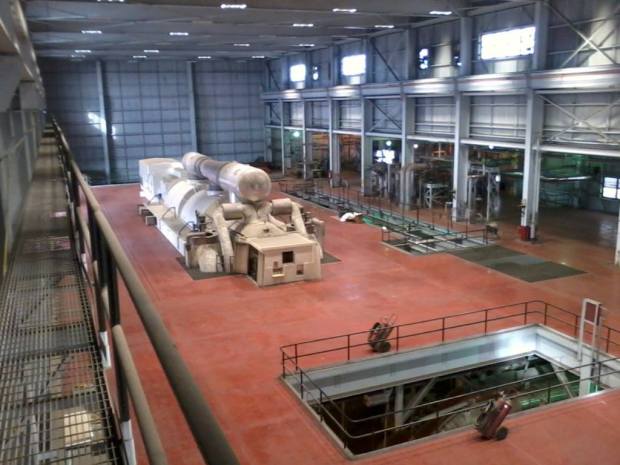
The Red T-G floor is always kept clean. The control room entrance is under the grating where this picture was taken. – Thanks Jim Cave for the picture
The tracks were extra muddy as if someone had intentionally wanted us to see that someone had walked right up to the control room door. The tracks did not lead away from the door. They just ended right there.
So, we did have proof that the commandos had actually visited our plant that night, only because one of the operators had come face-to-face with one in the main lobby. If that hadn’t happened, then they would have come and gone and we would have been none-the-wiser… other than wondering about the strange muddy footprints and the impression left in the mud by the stealth helicopter.
I suppose it was easy for the Power Plant operators to ignore the commandos since for the most part, they never saw them coming or going. The Power Plant Men were happy to play their part in the mock raid. Of all that has been asked of these Power Plant Men over the years, this was one of the more “unique” events. How many Power Plant Men across the country can say that they took part in a Special Ops Commando Raid on their Power Plant?
All I can say is that the commandos sure picked a great bunch of Power Plant Men and Women to attack. We were all honored (even those of us who were at home in bed asleep at the time) to be able to help out the military any way we could.
Power Plant Conspiracy Theory
Favorites Post #74
Originally posted September 20, 2014.
I remember the moment when it dawned on me that I may be witnessing an incredible Coal-fired Power Plant Conspiracy! I had just walked into the Control Room one morning in 1990 at the plant in North Central Oklahoma and saw the Shift Supervisor Jack Maloy and Merl Wright in a state of high concentration.
I always knew something was up when Jack Maloy was standing behind the large blue monitors near the Unit 1 Main Electric Board watching the big picture while the Control Room Operator Merl Wright was at the Main Control Panel turning knobs, tapping indicators to make sure they had the correct readings, twisting switches, holding them until red lights turned green…
Where had I seen this before? Something was telling me that everything wasn’t as it seemed. Sure… there was an emergency going on. There was no doubt about that. I knew that between Jack Maloy and Merl Wright, the current problem of the main boiler drum losing water was quickly going to be solved. I knew that Oklahoma City wasn’t going to experience any blackouts that day. This was a Cracker Jack (Maloy) team! But I couldn’t help thinking I had seen this somewhere before, and it was gnawing at my common sense.
Here is a picture of Jack Maloy’s team at the time:
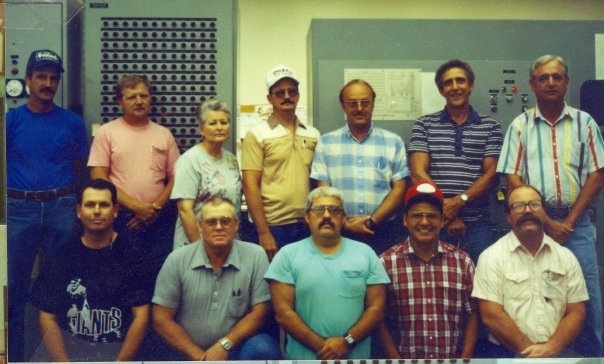
Jack Maloy is standing on the far right with the vertically striped shirt (like bars in a jail) directly behind Merl Wright kneeling before him – Coincidence? I think not.
I backed off in a corner to observe the situation while a crowd of operators began to grow to watch the master Shift Supervisor and his faithful Control Room Operator divert a disaster. Merl picked up the walkie talkie from the desk and called Larry Tapp ( Larry is the man in the light blue shirt in the front row in the middle. He’s the only one in the front row that is actually standing, while the rest are down on their knees while the picture is being taken).
Larry was on the boiler opening and closing valves. John Belusko, the Unit Supervisor was out there with him. I can’t tell you what magic they were performing, since I think that’s top secret. I figured that, because the operators seemed to be talking in code. Merl would key the microphone on the walkie talkie and say something like, “Larry, 45”. Larry would reply with something like “Quarter Turn”. “Position?”, “18 as far as I can tell”.
I translated the coded words to say: “….crawling under the path of the boom, whipped hold of a rope, secured one end to the bulwarks and then flinging the other like a lasso, caught it around the boom as it swept over his head, and at the next jerk, the spar was that way trapped and all was safe.” (Something I had read in Moby Dick, by Herman Melville).
Jack paced back and forth behind the counter with the monitors. Then he stopped and read the paper that was streaming out of the alarm printer as it continued humming as the paper piled up on the floor in front of him. Jack was a heavy smoker, and I could tell that right then he would rather be standing out on the T-G floor having a smoke at that moment. Before cigarettes were banned in the control room, Jack would have been pointing at that board with the cigarette.
When the water level began rising in the Boiler Drum, I could see the relieve on everyone’s face. I supposed it meant that a major catastrophe had been avoided due to the intricate knowledge that each operator possessed and their ability to quickly respond to any situation. This made the uneasy feeling I was having even worse. I couldn’t shake the feeling that I had seen this before. Just like Deja Vu.
It wasn’t till about a week later when my mom asked me if I knew someone at work named Jack Maloy. She had been talking to a friend of hers from Church named Louise and she mentioned that her husband worked at the Power Plant north of town. I replied by saying that I knew Jack Maloy well. He is a Shift Supervisor. She said that his wife Louise told her that Jack was a real nice person, but she wished that he would go to Church more. She hoped he would come around to that some day.
Then my mom mentioned something that brought back that feeling of uneasiness again. She said that the Maloys had moved to Oklahoma in 1979 from California. I thought that was odd that Jack had only arrived in Oklahoma in 1979, as he was a Shift Supervisor for as long as I could remember. Maybe even as far back as 1979 when I first worked at the plant as a summer help.
In that case, he would have been hired as a Shift Supervisor straight from California. — That seemed odd, since the majority of Shift Supervisors had worked their way up from Auxiliary Operator to Control Room Operator to Unit Supervisor, then finally to Shift Supervisor. Why would Jack be hired fresh from California? And how did Jack know so much about being a Shift Supervisor at our plant so quickly?
Then it dawned on me. You see…. It all went back to a lunch break about a year earlier when Charles Foster, an Electric Foreman and I were eating lunch in the Electric Shop office. When we didn’t know what to talk about, our favorite past time was to talk about movies and TV shows we had watched. We would describe the movie in detail to each other. On this particular day, Charles was doing the talking, and he was telling me about a movie that had to do with a Power Plant in California (yeah. California).
As Charles described the story, he told me that there was this Shift Supervisor named Jack (yeah… like our Shift Supervisor… Jack Maloy), and he was such a good Shift Supervisor that he could tell that there was something wrong with the Boiler Feed Pumps just by the way the coffee in his coffee cup would vibrate. Yeah. He was that good.
Charles went on to tell me about how at one part of the movie the water level was dropping in a tank and it was imperative that they raise the water level or some big disaster was going to happen. — Now you see where I’m going with this? Yeah. Sounds familiar doesn’t it? At that time, the incident in the Control Room hadn’t happened yet with Jack Maloy.
The movie sounded interesting so, when I had the opportunity, we rented the VHS tape from the video store and I watched it. Sure enough. This is what I saw….

Here is Jack the Shift Supervisor in California working with his Control Room operator trying to divert a disaster
Here is Jack Maloy and Merl Wright from the team picture above:
Very similar don’t you think? Two Shift Supervisors named Jack from California with the exact same hairstyle. Two Control Room Operators that look like Wilford Brimley. Coincidence?
Even Wilford Brimley’s hairline is the same as Merl Wright’s hairline!
For those of you who don’t know yet. The name of the movie is: The China Syndrome. It is about a nuclear Power Plant that has a near meltdown:
Need more? Ok. — hey this is fun….. So…. This movie came out in 1979. The same year that Jack Maloy shows up in Oklahoma from California. Obviously an experienced Power Plant Shift Supervisor. Merl Wright went to work 10 months earlier in 1978 at an older power plant just down the road (The old Osage plant), and then shortly after, was transferred to the same plant with Jack Maloy, only to end up working for Jack.
Need more? The China Syndrome Movie came out on March 16, 1979. Jack Maloy began working at the Coal-Fired Power Plant in North Central Oklahoma February 26, 1979, just two and a half weeks earlier.
I mentioned this coincidence to Charles Foster one day, but as far as I know, I never mentioned it again to anyone else… Maybe Scott Hubbard, since he was my best friend as well…
So, here are my thoughts about this….
What if Jack Maloy was the Shift Supervisor being portrayed in the movie “The China Syndrome”? He needed to move out of California just before the movie came out just in case someone found out his true identity. Being a Shift Supervisor at a Nuclear Power Plant, he would surely be in high demand at any Electric Company. Our particular Power Plant was in an out-of-the-way location. Sort of like a “witness protection program”.
I don’t know Merl’s earlier background, so I can still think that he moved to Oklahoma from California and began working for the Electric Company on April 24, 1978 just two weeks before I moved to Oklahoma from Columbia, Missouri. Since I don’t know any better, I can continue thinking this. It makes it more fun that way. — Of course, Merl, who may on occasion read this blog, may correct me in the comment section below…
So, what was it that I was experiencing that morning when I walked in the control room? I mean… What was I “really” experiencing? If, suppose, Jack and Merl really are the two that were in the control room when the “China Syndrome” almost occurred? Was it just an innocent crisis where the water level somehow decided to drop to a dangerously low level all by itself because of a faulty valve that was supposed to be closed, but was really open?
Or…
Was Jack and Merl trying to relive the excitement they had felt years earlier when they worked in a nuclear plant and they almost melted a hole all the way from there to China? Was this what experienced bored Power Plant Heroes do during downtime? I suppose it’s possible. It could have been a drill drummed up to test the acuity of the operators. To keep them on their toes. All “Shipshape and Bristol Fashion” just like on the Pequod in Moby Dick.
Something to think about.
Today Merl still lives in Ponca City, Oklahoma. Jack Maloy has moved to Cape Carol, Florida with his wife Louise. I suppose now that he has more time on his hand, hopefully he has given up smoking and is now making his wife happy by attending Church regularly. We can only hope he is at peace, on the opposite side of the United States from California so he doesn’t accidentally run into his old cohorts.
We are all glad that on his way to Florida from California that Jack decided to stop for 25 or so years in Oklahoma to Supervise the Coal-fired Power Plant out in the middle of the countryside…. As Charles Champlin from the Los Angeles Times said of the movie “The China Syndrome” — “Stunning and Skillfully Executed!” — Yeah. That describes Merl and Jack. Either way… Conspiracy or not. These two men are my heroes!
I wish Merl and Jack the best rest of their lives!
Comments from the original post: (one of my most commented posts)
Power Plant Men Summoned by Department of Labor
Favorites Post #72
Originally posted August 30, 2014.
When a death or a near death occurs at a workplace due to an accident, OSHA (Occupational Safety and Health Administration) will investigate what happened. There are two reasons for this. If they find that the company has been negligent in following the safety regulations set down in CFR 1910, then they are fined (if the negligence is severe enough). OSHA also investigates the accident to see if changes are needed to regulations in order to protect employees due to new unsafe workplace conditions that are not currently covered under CFR 1910.
Because of the tragedy that happened at our plant that I outlined in the post: “Tragedy Occurs During Power Plant Safety Meeting” and after I had met with the OSHA man (Gerald Young) to give him my deposition as discussed in the post last week: “The OSHA Man Cometh“, the plant manager, the assistant plant manager, and I were summoned to the Department of Labor building in Oklahoma City at 10 o’clock on Monday April 18, 1994.
On a side note:
The Department of Labor office in Oklahoma City is just a couple of blocks from the Murrah Federal Building that was bombed exactly one year and one day after our visit on April 19, 1995. Not that there was any connection.
I mentioned this because I went to the Murrah building later that day after the meeting with OSHA to meet my brother for lunch. He was working there in the Marine Recruiting office at the time. I think he was a Major then. He changed jobs in June 1994 and moved to Washington D.C.. His replacement was killed in the bombing. Here he is Greg today as a full Marine Colonel:
End of Side Note:
I was asked by Ron Kilman our plant manager to show up at 9:00 am on Monday in the building south of our main corporate headquarters where we rented office space to meet with the guys from our own Safety Department because they were required to attend the OSHA meeting with us. The Department of Labor building was just across the parking lot and across the street from this building, so we planned to walk from there.
I drove myself because Ron said he had other meetings to attend in Oklahoma City after this meeting was over and he wouldn’t be driving back to the plant. That was why I arranged to have lunch with my brother. I figured that word had gone out from Tom Gibson that I talk a lot during long trips, and he just wanted some peace and quiet that morning.
When we met with the Corporate Safety Department Jack Cox told us how we should act during the meeting with OSHA. He didn’t tell us to do anything wrong, like withhold information. He just told us to answer all the questions as truthfully as we could. Don’t offer any information that isn’t directly asked by OSHA. Don’t argue with them if you disagree.
From what I understood from the conversation, we were supposed to be polite, truthful and don’t waste their time going down a rat hole with specifics. I was told that I shouldn’t have to say anything and I should be quiet unless I was asked a specific question. The Safety department would answer all the questions and make any statements that need to be made. I was assured by them that I had nothing to be worried about. I only needed to tell the truth if asked anything.
If you know my personality, I always want to throw in my 2 cents, even when I know it is wasted on the audience. But I took this seriously. We were going to be fined by OSHA for 10 different violations relating to the accident that occurred at the plant. I was there because I was directly in charge of the work that was being done when the accident occurred. It was my deposition that was used to determine about half of the violations.
After we had been briefed on how we should behave during the meeting, as a group we walked from the corporate building over to the Department Of Labor building. One of the safety guys was carrying a few binders. I think one was the company’s Policies and Procedures book (We called it the GP&P).
Upon entering the building we went to the 3rd floor where we were asked to wait in a room until OSHA was ready for the meeting. The room had a long table down the middle. As usual, I picked a seat about halfway down on one side. I remember Ron Kilman sitting across from me and about 2 seats down.
We waited and we waited….. 10:00 came and went, and no one came. We quietly discussed whether this was to make us more nervous by keeping us waiting. Then someone came to the door and apologized. They said that Robert B. Reich, the U.S. Secretary of Labor was in the office that day and that had thrown off everyone’s schedule.
This was quite a coincidence, and we wondered if Robert B. Reich (it seems like you need to put the B in his name in order to say it right) would be attending our meeting. That would sort of throw a whole new importance of me keeping my mouth shut to make sure I wasn’t putting my foot in it.
It seemed as if Mr. Reich had shown up unexpectedly. Or at least on short notice. Almost as if it was a surprise visit to check up on the place. He didn’t end up coming to our meeting. Now that I think about it. This was one day shy of being one year to the date that the Branch Davidians had burned themselves alive in Waco, which was one year and one day before the Murrah Building Bombing three blocks away from where we were sitting that morning. Aren’t coincidences interesting? Just saying…
More about why Robert B. Reich was there further below.
Around 10:30 four or five OSHA lawyers (I assume they were lawyers, they talked like they were), came in the room along with the Jerry that had interviewed me a few weeks earlier. They apologized again for being late due to the arrival of their “supreme” boss. They sort of sat at one end of the room and the people from our company was more on the other end. Jerry, the OSHA man, sat next to me in the middle.
I was saying a mantra to myself…. “Don’t say anything… just keep quiet and listen…. don’t say anything… just keep quiet and listen.
The meeting began by the Lady at the end of the table reading off the violations to us. I don’t remember all 10. I remember the most important violations. They mainly centered around the new Confined Space section of 1910. It was 1910.146 that dealt with confined spaces and it had gone into affect April 1, 1993, almost one year before the accident happened. Generally, OSHA gives companies about a year to comply to the new regulations, which kind of put us right on the edge since the accident at our plant had occurred on March 3, 1994.
Because of this, some of the violations were quickly removed. That lowered the number down to 6 violations right away. That was good. No one from our company had said a word yet, and already the OSHA lawyers seemed to be on our side. Then they read off a violation that said that our company had not implemented the required Confined Space Program as outlined in CFR 1910.146.
This was when our Safety Department leader, Jack Cox. said that we would like to contest that violation, because here is the company policy manual that shows that we implemented the Confined Space Program before the end of the year.
One of the OSHA lawyers responded by saying that we had not fully implemented it because we had not trained the employees how to follow the policy. When he made that statement, Ron Kilman contested it.
He had a stack of papers that showed that each of the employees at the plant had taken the training and had signed a paper saying they had read the policy. Not only that, but the person that was hurt was not a company employee, they were an outside vendor who was hired by the company to vacuum out the hoppers.
The OSHA man said that just because they took the course did not mean that they were properly trained. Ron asked how do you know they weren’t properly trained. The OSHA man replied, “Because they didn’t follow all the rules. If they had, no one would have been hurt.” — What do you say to that? You can tell we weren’t properly trained because someone was hurt? I suppose that the OSHA rules were written in such a way that if you followed them to the letter, no matter what kind of mechanical failure happens, no one will be hurt. I could see the frustration on Ron’s face.
I was a little amused by Ron’s statement though because Jack Cox had told us to just let them answer all the questions and the first seemingly absurd thing the OSHA man had said, Ron had addressed. — I smiled and said to myself…. “Don’t say anything… just keep quiet and listen…”
One of the violations was that we didn’t have a Confined Space Rescue Team. That was true, we didn’t. There was something in the regulations that said, if a rescue team could arrive in a reasonable time from somewhere else, we didn’t have to have our own rescue team…. Well, we lived 20 miles from the nearest fire station equipped with a Confined Space Rescue team. So, there was that…. That was a legitimate violation.
The next violation was that we didn’t have a rescue plan for every confined space in the plant and each confined space was not clearly marked with a Confined Space sign. This was a legitimate violation.
The next violation was that we hadn’t coordinated efforts between different work groups working in confined spaces together. This was clearly stated in the regulations…. — Oh oh. that was me… I think I was mid-mantra when I heard that one. I had just said to myself… “…anything….just keep….” when I heard this violation. I stopped muttering to myself and immediately forgot that I was supposed to keep quiet.
I said, “But wait a minute. We did coordinate between the three groups that were working in the confined spaces. I was coordinating that. I had posted a sheet on a beam in the middle of the hopper area where the accident occurred where the Brown and Root contractors, and the vacuum truck contractors knew what hoppers were still full and which were safe to enter.
I kept the sheet updated each day and so did the vacuum truck workers. They indicated when they had finished vacuuming out a hopper, and I would inspect it from above. When I deemed it safe, the Brown and Root contractors could enter the space. The accident occurred because one of the vacuum truck workers entered the confined space while still cleaning it out and before I had inspected it to make sure it was safe.”
Jerry (the OSHA man that had interviewed me turned and said, “Oh. I didn’t know that. Do you still have that piece of paper?” — Incredibly, I did. About a week after all the vacuuming had finished and all the hoppers were safe, I was walking through the hopper area under the precipitator where I found the paper with the duct tape still on it laying on the grating. Without realizing the importance, I picked it up and brought it back to the janitor closet behind the electric shop that we now used as a “Precipitator Fly Ash Cleanup Room”. I had laid it on a shelf there. The lawyers said, “Send us the original sheet and we will drop this violation.
Here is a copy of the piece of paper. The big black splotch at the top is what duct tape looks like when you make a copy of it.
Well, that worked out good. I had stepped out of line by opening my mouth before I had been asked a question, but everything worked out all right.
The final verdict was that we had four violations. We had to re-train our employees on Confined Spaces. We had to create a Confined Space Rescue Team. We had to put the correct signs on all of the confined spaces and we had to develop rescue plans for all of the confined spaces on the plant grounds. If we did that by August 1, 1994, the four remaining violations which amounted to a $40,000 fine would all be dropped. So, we had our work cut out for us. This not only impacted our plant, but all the Power Plants. The meeting was adjourned.
I already told you what I did after the meeting (I went and ate lunch with my brother). But I haven’t mentioned yet why Robert B. Reich had made a surprise visit to the Department of Labor building in Oklahoma City on April 18.
As it turned out, that morning, Labor Secretary Reich had come to Oklahoma City to hand deliver a $7.5 million fine to Dayton Tire Company. This was due to an accident that had resulted in a man, Bob L. Jullian, being crushed by a piece of machinery in the tire plant. He died a week and a half later at the age of 53.
Robert B. Reich had become so angry when he had studied the case on Friday that he wanted to hand deliver the citation himself the following Monday. That is how we ended up in the building at the same time on Monday, April 18, 1994. We resolved our dispute with OSHA on a congenial note and the citations were dropped on August 1. Dayton, however, was still fighting the conviction 18 years later, eventually paying around a $2 million penalty.
Now you know the rest of the story. Well, almost. Like I said, we had a lot of work to do in the next three and a half months.
Lizzie Borden meets Power Plant Man
Favorites Post #71
Originally posted March 8, 2014.
I have many stories that I am going to write about the extraordinary Power Plant Men in North Central Oklahoma from 1988 to 1994 this year, but it happened that I was watching a recorded episode of Forensic Files (otherwise known as Mystery Detectives) on TV tonight and it made me remember…. The story I was watching was about a women that was kidnapped in Pennsylvania June 1988 and murdered in order to draw the husband to a location where the kidnapper could collect the ransom and murder the husband. The man guilty of the crime was found to be a person that shared a pew in the Presbyterian Church with the couple but held a grudge against the husband for turning him down for a loan at the bank a few months earlier.
While I watched this show, I flashed back to June 8, 1988 and suddenly remembered the moment I was standing in the parts cage in the back of the electric shop in the main switchgear at the coal-fired Power Plant in North Central Oklahoma when I heard about the murder of Mark Stepp.
Mark Stepp was an Instrument and Controls employee at our plant. Both he and his wife had been brutally murdered while they slept in their home in Stillwater, Oklahoma. Mark Stepp had been shot once and stabbed many times. His wife Delores had been stabbed to death an excessive amount of times until she was passed dead. I cringe to think about it to this day.
The next thing that entered my mind while watching this video was one month earlier on May 6, 1988. We had a new Electrical Supervisor, Tom Gibson, and he had sent Terry Blevins and I with two of the Instrument and Controls men to Tulsa to a class at Nelson Electric to learn how to program an Allen Bradley PLC (programmable Logic controller).
When I think about this instance, I remember Ron Madron driving us to Tulsa in a company vehicle to the training (Ron. I know you read this post, so you an correct me if I’m wrong). It could have been Glenn Morgan. One thing I definitely remember is that Mark Stepp was with us that day.
The reason I remember that Mark was with us that day, was because when the training was over around 1:30 or 2:00 pm. Mark didn’t want to go directly back to the plant. He wanted to go for a ride around Tulsa. This wouldn’t be so peculiar, except that a little more than a month later, Mark Stepp was brutally shot and stabbed to death while he slept in his bed along with his wife.
Somehow I always felt that Mark’s behavior the day when we went to learn how to program Allen Bradley Programmable Logic Controllers was somehow related to his death. Maybe it was. Maybe it wasn’t. I’ll let you decide.
So, let me describe what happened early morning on June 8, 1988 (or 6/8/88 for those of you who are fascinated with numbers like I am). In the middle of the night, someone walked into Mark Stepp and his wife’s Dolores’s bedroom, and shot Mark Stepp in the neck. Then proceeded to stab Mark Stepp and his wife an excessive amount of times until they were surely dead. I don’t remember the number of stab wounds. They were stabbed an excessive amount of times.
I remember first hearing about this when I had walked into the electric shop parts cage when I had gone there to look for some receptacle boxes With Diana Brien. Andy Tubbs came into the cage and told us about the murder and that their daughter had found them. The entire Instrument and Control Shop was on “high alert”. Suppose this person was murdering Instrument and Controls Power Plant Men at our plant! That day, no one really knew the motive.
I think some people from our plant were interviewed about the murder. I don’t know. I do know that Francine Stepp, their daughter was often mentioned in the discussion. She was on the same Softball team with her mother and father and many people at the plant were on this same softball team. They were all concerned with her well-being since after spending the night at her friend’s house, she came home and found her parents murdered in their bed.
During the next month while the police were investigating the crime, many revelations came out about Mark Stepp and his wife Dolores. None of which surprised me, though, it may have surprised those that worked more closely with Mark. You see, Mark has showed his true colors that day when we had all driven together to Tulsa to go to training.
When training had finished for the day, Terry Blevins and I (and Ron Madron, if he was the person driving) had counted on getting back to the plant in time to go home at a decent time. Mark Stepp, on the other hand had something else in mind. He wanted to go for a drive through Tulsa.
This didn’t make much sense to me at first, since I couldn’t figure out why someone wouldn’t want to return to the plant in plenty of time to fill out our time cards and get ready to go home to our wives and children (well… I didn’t have any children at the time, but I do remember wanting to go home at the regular time). We were on the clock and we were paid by the hour.
It didn’t make sense to me until we were driving down what seemed to be the frontage road of I-44 at the time and we came up to 6410 E. 11th Street. A similar thing happened to me just last week when a friend of mine was celebrating his 20th year at Dell and a person from Security who was playing a joke on my friend pulled into a location at 6528 North Lamar in Austin Texas. My gut sucked up like I was going to be sick as his friend pulled up to the entrance and proclaimed that this was the second part of his 20 year anniversary present. Well. my friend happened to be in like mind with me, which felt a sudden urge of betrayal and confusion. I’ll let you do your own homework at this point.
Mark Stepp asked us if we wanted to stop at a “Gentleman’s Club”. Really? With three die-hard Power Plant Men in a company car? The rest of us unanimously voted to go back to the plant. Ok. That was an indicator that Mark had something going on with his life that was not quite wholesome. What made this seem surreal was that I was the youngest at 27 years old, Mark was 40 years old and the other two in the car were in their 30s. It wasn’t like we were young unmarried irresponsible kids.
I bring this up because later I was not surprised to learn during the investigation of Mark Stepp’s murder that he had been involved with a group that included “Wife Swapping”. I know there were a lot of rumors going around at the time that one of the persons involved in the murder must have been involved in the occult, and that it made sense given the manner of death. None of this surprised me.
At one point we learned that hidden videotapes had been found in the house of their daughter while she thought she had privacy in her bathroom or bedroom. I don’t know if this was true or not, but I wasn’t surprised if it had been true. Actually, after that day in Tulsa, nothing surprised me about Mark Stepp anymore.
I don’t mean to sound cruel. I grieved when I learned about Mark and his wife’s death as much as many other Power Plant Men. No matter the circumstances. It was a great tragedy. Whatever hatred had been the cause of this murder, it had been caused by tragic events proceeding this murder, I have no doubt.
I say this, because within a month of the murder, the murderer had been located. It turned out to be their own daughter Francine. I didn’t know the family at all, and I have never met Francine. Other Power Plant people knew them much better. As I said, they were on a softball team together. Francine would go to the games to watch the team with her mother and father play their games. This came as a shock to them all.
Many people blamed her accomplice Cindy Sue Wynn. Francine’s parents had told Francine that they didn’t like Cindy and wanted her to stay away from her. The story is that Francine was spending the night at Cindy’s house when they devised a plot to kill Mark and Delores. Francine was 18 years old at the time, and was a Freshman at Oklahoma State University. If you would like to learn more about the murder you can find articles from the Daily Oklahoman here: “Two Stillwater Teens Facing Death Charges” and “Man Says he Heard Death Plot“.
They both pleaded guilty and Cindy was sentenced to 10 years in prison. In 1990, two years later, Cindy pleaded to be placed on a “pre-parole” program which was denied. Francine was sentenced to life in prison. Since that tragic day, Francine Stepp was eligible for parole in 2003. She was denied parole then, and has since been up for parole in 2006, 2009 and 2012. Francine’s next parole hearing is June 2015.
Just like the day that Jim Stevenson walked out of the shop telling Bill Ennis about the Snitch stealing the portable generator (See the post, “Power Plant Snitch“), I sat back and didn’t say anything when I heard about Francine’s conviction. What I had to say really wasn’t relevant. Just because it didn’t shock me that this particular daughter was so easily talked into murdering her parents by her friend, what I knew was no proof that she had been abused as a child.
Francine has now served 26 years in prison for murdering her parents. Her accomplice has been out of jail for at least 16 years. Francine is now over 44 years old (and now in 2020 is 50 years old). After 25 years, I think someone needs to take a fresh look at the motive as to why she would have wanted to take the life of her parents. Was it really because her parents didn’t want her to “play” with Cindy? Does that make much sense? Especially with all the other possible motives floating around.
I have recently been watching reruns of “Forensic Files” (also known as Mystery Detectives) on Headline News (CNN). I keep waiting for the episode about Francine Stepp running to her neighbor’s house on the morning of June 8, 1988 screaming that her parents have been murdered. Knowing full well that she had murdered them… But what really was the motive?
Was it really that her parents didn’t let this 18 year old girl spend time with her friend? Then how was she spending the night with her on June 7? Which parent hasn’t forbidden their child to play with someone because they were a bad influence? When did that ever do any good or amount to a hill of beans?
The little time I had spent with Mark Stepp a month before his murder gave me a small glimpse into his life, and maybe the life of his daughter. I didn’t really know the guy. I do know, however, that a true Power Plant Man wouldn’t try to drag three other married Power Power Plant Men (though I was only a pseudo-Power Plant Man myself), to an indecent “Gentleman’s Club” (especially while on the clock).
So, I have to wonder. Will anyone go to Francine’s defense in June 2015? Does she even care anymore? I don’t think she even showed up to her own parole hearing in 2012. She has spent many more years in prison than out of it in her life so far. If she was released, what would she do? Can you start your life over again when it came to a halt when you were only 18?
This is a hard post for me to write. I have a daughter who is 24 (now 30) years old this month. She was born almost 2 years after this tragic event took place, and one year after Francine was convicted of murdering her parents. During my own daughter’s entire life, Francine has been in jail for murdering her parents. Her father worked at the Power Plant in North Central Oklahoma.
If Mark Stepp could speak from the grave today at Francine’s next parole hearing, I wonder what he would say? I only know what those at the plant who knew her would say. They all thought she got along with her parents. They thought her parents were proud of her. Billy Joel sang a song called “The Stranger“. It is about looking in the mirror and seeing that other side of you that you don’t let anyone else see. I suppose some people really have one of those lives where they aren’t really honest with the rest of the world. Billy Joel did, evidently. Maybe Mark Stepp did as well.
I have known for a while that I had to write about this story. I have dreaded this post. I am glad to have finally written it. Now I can put it behind me.
Comments from the original Post:
-
-
Wow – I hadn’t thought about Mark’s murder in years. This verse gives me hope: Mark 4:22 For there is nothing hidden which will not be revealed, nor has anything been kept secret but that it should come to light.
Thanks for another great story!
-
-
-
Wow, that’s an intense story. It certainly seems like there was more going on with Francine than anyone knew. Sad all around, but a very interesting post.
-
-
-
I can only imagine how hard this was to write. Nice job, I hope writing this helps you in some way. It is amazing how friends can detect something below the surface in other friends. I know that feeling, but nothing like this.
-
-
-
Hard to read, too. But if we are to understand our species, we have to know such things. And we need to understand when we raise kids … and when we vote, too.
-
-
-
I can’t for the life of me find the person’s name who wrote this, but I wanted to thank them for doing so. I went to school with Francine and had some of the same classes, but we did not know each other well. I always wondered what happened on that night and why she did it. She was very quiet in high school and as the years progressed she seemed to go from being ‘shy quiet’ to ‘angry quiet’ if that makes sense. I knew absolutely nothing about her life whatsoever so this is just an outsider’s observation. Reading the news made one think that she was this monster. I mean who could fathom killing their parents? However, none of us knew what Francine had to deal with in her life. To be able to commit this type of crime possibly points to some deep-seated anger and animosity. Your input gave me a little snippet of another viewpoint and I thank you for that and I’m sure Francine would as well.
You say you dreaded this post and I’m sure it was very difficult for you. I hope it released anything you were carrying within you. Thank you again as it has shed some light for me and hopefully others as well
-
-
-
I would encourage anyone reading this post (and the author of this post) to read the book “Unlikely Assassins: The Shocking True Story of a Couple Savagely Murdered by Their Own Teenage Daughter”. It is a book about this murder and contains a lot of information that was gathered while interviewing the detectives involved in this case.
I knew Dee at OSU – as a student and as a coworker. She shared stories about her family, and I believed her and Mark to be loving, involved parents. I was saddened and shocked to hear about these deaths, Francine’s involvement and the things they were involved in. It looks like Dee and Mark were not the only victims in this family. It reminds me that we never know everything about our friends and acquaintances, and that we need to remember to pray constantly for others.
-
Power Plant Men’s Club Prizes and a Story of Luck
Favorites Post #70
Originally posted September 27, 2013
My wife used to wince a little each time I told her I would be late coming home that evening because I was going to the Men’s Club dinner after work. Not because I was going to be spending the evening at the Raccoon Lodge with Ralph Cramden:
It wasn’t because I would come home Blotto’ed after an evening of drinking. No. The reason my wife would cringe at the thought of Men’s Club was because about half the time I went to Men’s Club I would come back with some sort of prize.
You see… I have always been cursed with being lucky. It came in handy sometimes because there were times when I was flying by the seat of my pants and if I wasn’t just plain lucky, things would have ended quite suddenly and there would not have been any “rest of the story.”
Others in the Electric shop recognized that I was lucky and would try to take advantage of it by having me buy the squares in the football pots and they would pay me back. Those types of things never really worked. I tried to pass my luck on by proxy, but it didn’t seem to rub off.
In the early days, Men’s Club was held offsite at a lodge. At those dinners, there were alcoholic beverages being served. That was back during the summer of 1979 when I was 18. I was barely old enough to drink the 3.2% beer from a convenience store in Oklahoma at the time.
I didn’t have a car, so I had to rely on Steve Higginbotham driving me home in his Junky Jalopy. (See the post: “Steve Higginbotham in his Junky Jalopy Late for the Boiler Blowdown“). He acted as if he had been drinking even if he hadn’t been… or maybe he had and I just didn’t know it.
By the summer of 1980, after David Hankins was killed in an automobile accident while driving home from a Men’s Club event, alcohol was no longer served and most Men’s Clubs at our Power Plant were held On-Site.
The Women’s Club however was still held off-site. You see, in order to be fair, the Women’s Club was given the same amount of money that the Men’s Club was given. Only there were over 300 men and only about 15 women. So the Women had even better prizes than the Men.
I suppose it was when they decided to have Men’s Clubs in the break room at the plant that they decided they needed to do something to make it worthwhile. They tried having interesting speakers, but listening to Bill Gibson (Gib) tell jokes would only go so far. After all, even though he could tell jokes as well as any other storyteller at the plant, we could hear him any day of the week. So it was decided to start having drawings for prizes.
Prizes were good. Everyone likes prizes. After all, when you won a prize it was given to you freely. You didn’t have to put on a show or stand on your head or anything to get it. You just had to walk the gauntlet of Power Plant Men oogling your new fishing rod, or tackle box wishing they had won it instead of you, and asking you if you would like to trade it for an old busted up pair of Channel Locks.
There were some of us that seemed to win prizes all the time. Some may have even won enough prizes to furnish their house with prizes from Men’s Clubs. Me? I did a pretty good job of furnishing my garage.
Here are some of the gifts I won:
If you look closely at this picture you will see that even after 20 years, the “Heavy Duty Double Gear Cable Puller” is still in the box. — Yeah. I never had a chance to use it. Believe me…. I have been waiting desperately for the day when I can say. “I have a tool for that!” Just like Bob Kennedy used to say (See the Post, “Bobbin’ Along with Bob Kennedy“). Alas… the “come-along” is still in the box.
I did use the floor jack on my riding lawn mower when i had to change the tires. The tackle box actually has Tackle in it. the cooler has been used a lot. The camping chair, not so often. I have never used the Emergency blinking light combination air compressor, that hooks up to a car battery for power.
I won many other prizes, but these are the prizes that I still have readily available in my garage. You can see that I dragged them all into the kitchen this evening for the picture. My wife was sitting on the couch when I came into the room with a floor jack under one arm, and a combination light slash air compressor under the other arm holding a tackle box in one hand the cooler in the other.
She asked me what I was doing, (with a look of anticipation). I suddenly realized that the look of hope in her eyes was because she thought that I had a momentary lapse of civility and was going to be throwing out some junk from the garage. I caught a glimpse of disappointment when I told her I was writing my blog post. — What? throw away something from the Power Plant? Do I act like I have dementia?
My son walked into the kitchen to quench his thirst and saw the assorted items arranged across the kitchen floor and asked, “Why is all this junk here in the kitchen?” I explained that I was writing my blog and these were some of the things I won at Men’s Club at the Power Plant. “Oh. Ok,” he said as he gave me a side-glance that said, “whatever dad.”
After having collected all sorts of really good junk over the years at the plant, Terry Blevins who had been a fellow electrician for 11 of the 18 years I had spent in the shop was sitting across from me during dinner and the subject of winning prizes came up.
I never liked to mention to others how I won a prize half the time I went to a Men’s Club, because they used to give the other lucky people such a hard time about it. Accusing them of cheating because they were always winning. It seemed like Fred Turner was another lucky person that came away with a lot of loot.
Anyway, When Scott Hubbard and I were talking to Terry, he mentioned that he had never won a prize at Men’s Club. What? I couldn’t believe it. He had to repeat it many times before it sunk into my thick skull. I must have had more than 20 Men’s club prizes by that time and Terry had never ever won a prize. How does that happen?
I recognized that I was lucky early on. When I was in college I would count on it. I also contributed it with having Saint Anthony as one of my best friends. He is the saint of finding lost items. Here are a couple of examples that happened in just one night.
I had arrived in Columbia, Missouri my senior year in college from Christmas break in a brand new Honda Civic. It was early January, 1982. This was the same Honda Civic I just re-posted about earlier this week (See, “How Many Power Plant Men can You Put in a 1982 Honda Civic“).
My friend Ben Cox had come over to the dorm and we decided to go eat at a natural food store just northeast of the campus called the Catalpa Tree. So, we took my car. The roads were icy. That was fine with me. Not only was I lucky, but I was experienced in driving on ice, having learned to drive in Columbia.
Now, when I say the roads were icy. I mean.. with ice. Not packed snow. So, with Ben sitting next to me in the Honda, in the dark as I made my way up Locust Street going east. I was timing my speed so that I would hit 9th street (The Strollway) just as the light turned green, because if I had to stop, it would be difficult since I would be stopping on the slope of a hill and would probably start sliding back down.
Just as I arrived at 9th street the light turned green and I slid right through the intersection right on time. The only problem was that there were two cars going each direction on 9th street (one in front of the Missouri Theater and the other in front of the Calvary Episcopal Church), and they were not able to stop.
So, I was caught directly between two cars. There didn’t appear to be anyway out of this predicament. That was when I found that my new Honda Civic had a tendency to spin out of control on ice for no apparent reason.
As I slid across the intersection my car began to spin around. Just as I was in the middle of the intersection and the two other cars were skidding by me, I had turned parallel with them. As they passed by, all three cars continued spinning and going through the intersection, pirouetting as in a ballet, so that as the car going north was just passing by, the front of my car came around and pointed back in the direction of travel (I had spun 360 degrees), and I continued on my way as if nothing had happened. Whew… — Yeah. My pants were still dry at that point… — see how lucky I was? Dry Pants!
Anyway. I went one more block and parallel parked directly across from the Greyhound bus depot. Ben climbed out of the car and made some sort of comment, though I couldn’t quite hear him. I noticed he was walking a little funny. Maybe his pants weren’t as lucky.
Anyway. We walked the two blocks to the restaurant slash health food store called “The Catalpa Tree”. We ate something that had fried tofu in it that tasted like the tofu had went bad some time last summer… — No. That wasn’t part of the story about how lucky I am.
Anyway. After dinner Ben and I walked back to my car. As we were approaching the car, another car began rolling back out of the Greyhound bus depot directly toward my car. There was no one behind the wheel. All that Ben and I could do was stand there and stare at it heading directly into the side of my car.
The car had rolled out into the street and was bound to smash right into my brand new car. Then all of the sudden another car came sliding down the road right between my car and the approaching one. The rogue car smashed into the side of that car instead of mine.
When the car with no driver from the bus depot came to a smashing stop, two little boy heads peered up from the front seat. You see. Their mother had left the two kids in the car while she went into the bus station to do something. She had left the car running to keep her children warm in the sub-freezing weather. Well…. oops.
After making sure that everyone was all right, I climbed into my car and drove away. Within an hour… two incidents where I could have had my new car smashed through no real fault of my own, instead I came out unscathed. — That has been the story of my life — well.. Not to tempt fate…
My luck hasn’t changed… I still end up bringing home things that I win at different functions. Sure some functions everyone comes home a winner. But there are times when it just isn’t fair to the my coworkers.
I have a number of stories since I have been at Dell, but they are all similar to this one story…. A couple of years ago, I attended a Well At Dell event where a special speaker that was a Champion Runner from Burundi Africa was speaking about everything he went through to reach this point in his life. He survived an attack during the war between the Tutsi and Hutu tribes. His name is Gilbert Tuhabonye.
Tuhabonye was a lucky person. Or you may say that he has a large guardian angel. On October 21, 1993 while he was in High School, a group of Hutu attacked his school. They took more than 100 students and teachers, beat them and packed them in a school room then burned the building down with them in it. After being burned, nine hours later he took the charred bone of another student and used it to break out of the building where he ran to safety.
Anyway. I went to go listen to this remarkable man speak in a large meeting room on the Dell Campus in Round Rock, Texas on October 21, 2010. 17 years to the day after Gilbert’s tragedy, and the beginning of his new life.
I arrived early and was the first person in the room that wasn’t someone setting up the room for the event. I walked up the middle row with the pick of any seat. I went to the third row on the left and sat on the chair in the middle of the row.
The people that were setting up the room all smiled at me. They had all knew me, as I had been working out in the gym where they all worked. I said hi back to them.
Anyway at the end of the inspirational talk by Gilbert, he announced that one person in this room was going to get a free copy of his book. They just had to look under their seat and if they had a paper taped under it then they were the winner. — Of course… I had the pick of chairs in the room… so you know what happened. Yep. Here is the book:
I could go on and on… maybe I will later when I talk again about how lucky I was to just miss a falling piece of metal that would have killed me, but I had stopped to tie my shoe…
Sure I’m lucky. Today is September 27. It is one of those days that sticks in my mind because both tragedies and good things have happened on this day in the past. On September 27, 1980 I was lucky enough during a tragic situation when the world was turned upside down, that I became friends with a young beautiful person named Kelly.
Kelly became my wife 5 years and 3 months later. After all the times I have been lucky enough to win some prize even when I wasn’t really trying, I can surely say that on that one day when I really wasn’t looking, I began a relationship with the most remarkable person I have ever met. It has been exactly 33 years since that day (now almost 40 years), and I still believe that it is the luckiest day of my life.
Comment from Original Post:
-
You were even lucky enough to find the best roomy in Muskogee!!
Addional comments from repost:
-
-
bonus points and chuckles for mentioning “except for the cat food”
-
-
-
Great story! I thought the Men’s Club meetings were a lot of fun. Wouldn’t mind going again – if they are still having them.
-
-
-
When I lived in Colorado Springs, I discovered something about snow-packed roads. The pressure of your tires melts the snow. When it refreezes, it becomes ice. Its a wonder I did not kill myself driving on that stuff.
-
-
The kids in the car remind me of a story, our crew van used to stop at the mini mart on the way to work & we’d all load up with soda, candy, frozen burrito’s, donuts & everything else we needed to get us through the shift, one day while walking back to the van, on a freezing cold snowy day, there was an SUV parked next to the van with 2 kids in it. A baby in a car seat and a toddler standing on the drivers seat, maybe about 2 yrs old. the car was left running to heat the children. The toddler standing on the drivers seat had his hands all over the gear shift trying to yank it in gear like he’d seen his mom do a hundred times. I set my stuff down & walked to the car to distract the toddler, the door was locked so I pounded on the glass & yelled & distracted the child enough that forget he was trying to put the car in gear & back over the gas pumps. Well, the mom came out of the store & gave me the dirtiest look you’ve ever seen for “scaring her child”. I just picked up my stuff, walked back to the van & went to work.
-





















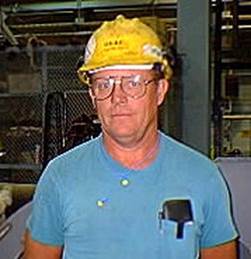
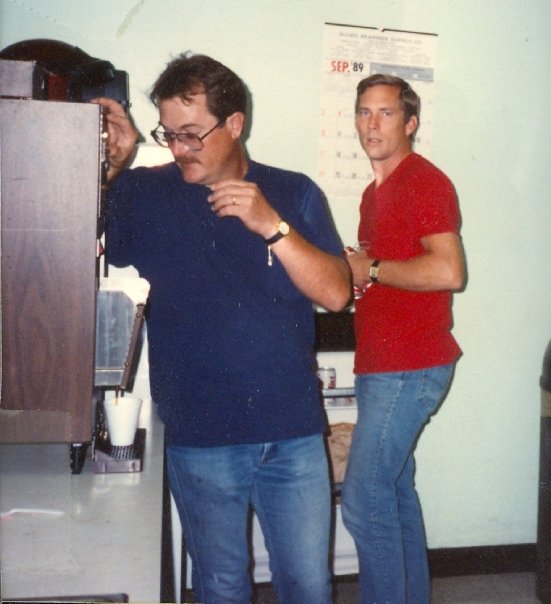
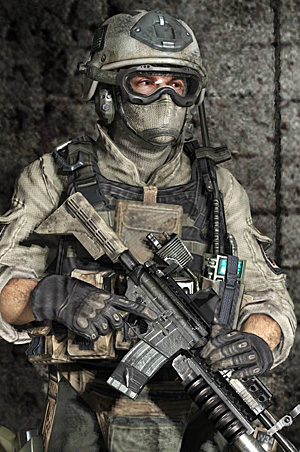



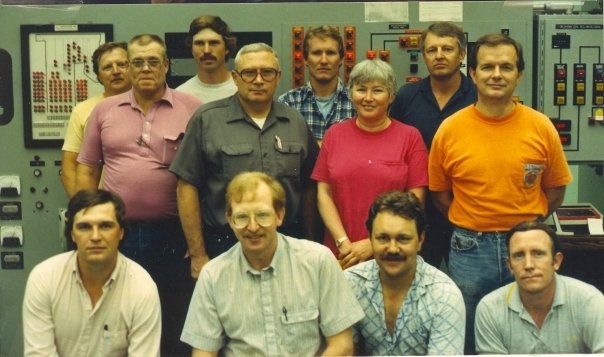


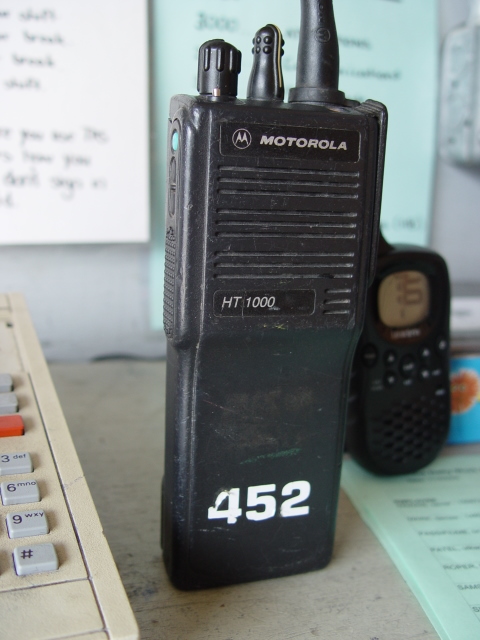
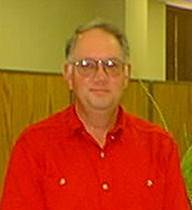



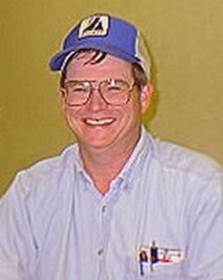









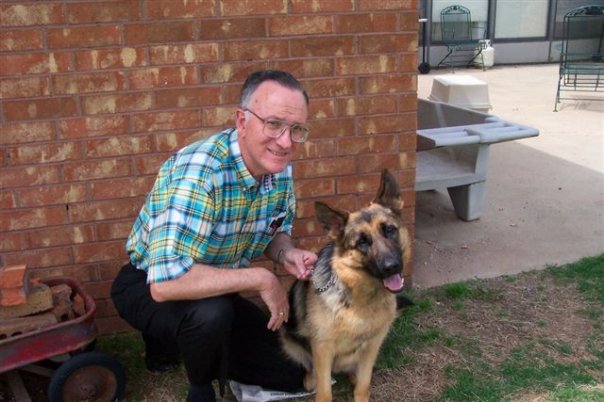
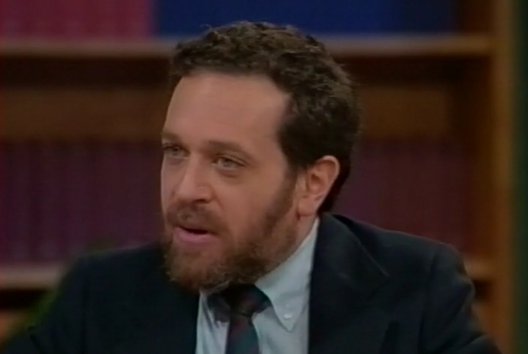
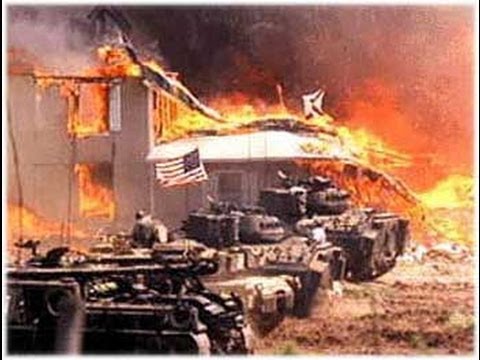

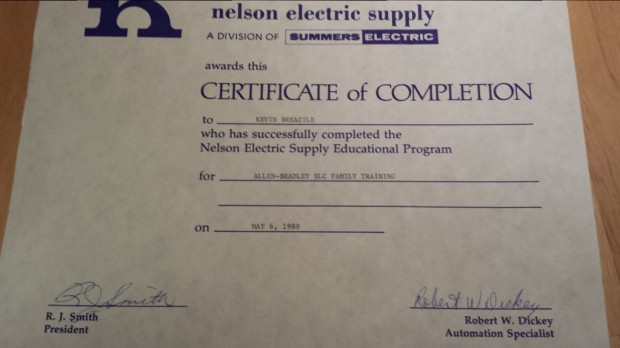

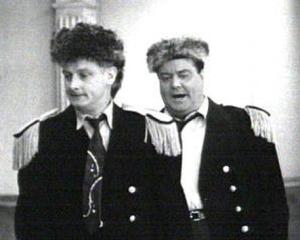
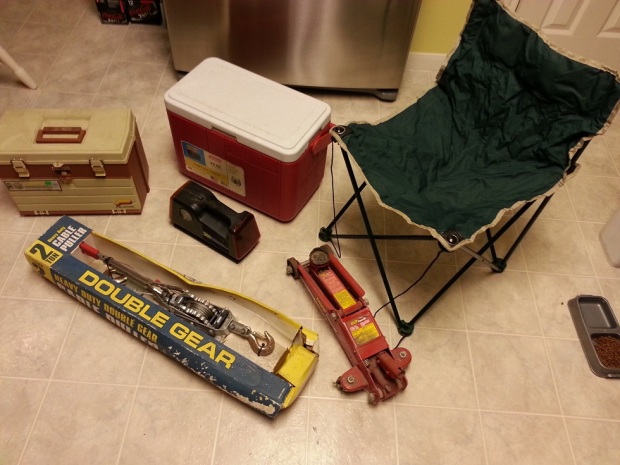


I remember in the 1980’s when someone had taken one of the spare annunciator windows out and placed a hand written paper in it that said ” China Syndrome”. It was there for a while.
Thanks Fred for reminding me of that. Um… I didn’t do it!
Jack was from Byng, Oklahoma- a Byng graduate he had attended Okmulgee Tech as well- He worked at Barstow, CA awhile at a plant there- and there training was far different than ours is who he learned so much- he even did some lineman training for them as well as other stuff- I don’t know all his capacity while he was there- he had a lot of experience with combined cycle unit they had but, I know one thing he was a heck of an operator- seen him do some things know one else could ever do- he had the best power plant knowledge of any of the operators ever other than Joe , he, Joe Gallahar, and Padgett were all really good ones. learned a lot from everyone.
LOL You hooked me in early on this one, but as soon as you said “by the way the coffee in his coffee cup would vibrate” I knew which track we were on an enjoyed the rest of the ride. Reminded me of the movie and also the very real stress of Three Mile Island. Funny how your “conspiracy theory” brought those feelings of terror back more than 35 years after I was sitting glued to the TV every day when I came home from high school!
Great story! And 2 great men. Thanks for the memories.
awesome conspiracy story…maybe Jack knew just how to mess with the system, just so he could save it, all in hopes that they would make another movie out of his job.
So anyway, I really enjoyed that. Thanks for sharing.
We got The China Syndrome from the library based on this post! Good movie, it does seem very coincidental the way Jack just sort of appeared at your plant right before the movie came out. I love a good conspiracy theory 😉
God, I must be old. China Syndrome came to mind as soon as you said near tragedy in California plant! I saw this in the theater fresh out of high school. Jane and Jack were incredible by the way. Interesting theories. Anything is possible. And probable. Nice post.